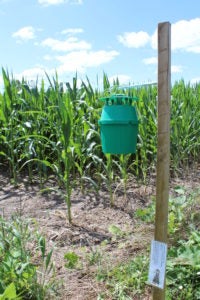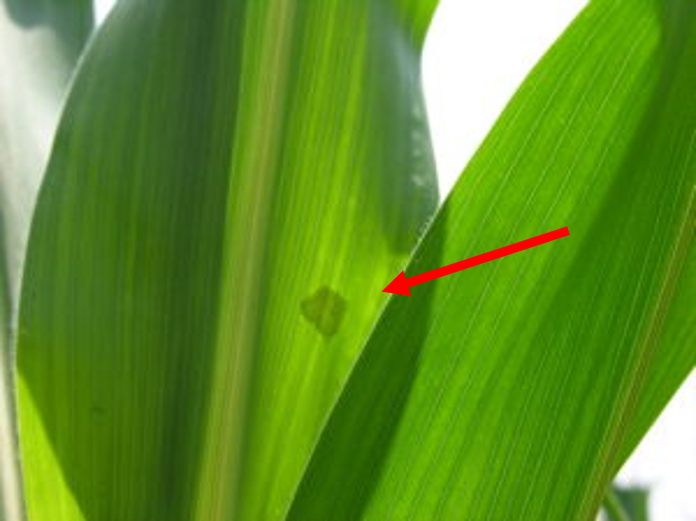Western Bean Cutworm (WBC) infestations tend to be patchy and sporadic in many fields, therefore careful monitoring is required to determine if an insecticide application is needed.
Monitoring Moth Flights
On average, peak flight occurs sometime between mid-July and early August. The exact timing varies regionally and from year to year. To determine when peak flight is occurring in a given area, pheromone traps are used to monitor moth activity. To participate in WBC monitoring network or to follow peak flight in your area click here.

Field scouting
Fields at greatest risk for WBC infestations are those at pre-tassel to early tassel during the time of moth flight. Scout these fields in the weeks before, during and after peak flight in your region. Infestations are patchy and egg laying occurs over multiple weeks, so fields must be repeatedly monitored. It’s recommended that fields are scouted every 5 days.
- Scout 20 plants in 5 areas of the field (focus on areas that have plants at pre-tassel to early tassel).
- Look at the upper 3-4 leaves of these plants
- Check for egg masses and larvae

Expert Tip: Use the sun to your advantage and look for shadows of egg masses showing through the leaves. Turn the leaves over to confirm that it is a WBC egg mass. - Tracey Baute

When to apply an insecticide
In Eastern Canada, the recommended threshold for an insecticide application is an accumulated 5%. Meaning, if in the first scouting 3 plants of the 100 plants examined have eggs or larvae (3%) and in the second scouting 5 days later, two plants are found to have eggs or larvae (2%) these percentages are added together, and the 5% accumulative threshold has been reached. A lower threshold of 1-2% may be needed in areas with a history of DON issues and in hybrids susceptible to fusarium development. Timing of the insecticide application is important to ensure the WBC larvae do not make it into the ear. The most effective time to apply is when fresh silks are present (before silk browning).
Caution: Wear safety glasses while scouting to protect your eyes from cuts by leaf blades!
When it’s time to act, go with Coragen® MAX insecticide to control Western Bean Cutworm
References
Western Bean Cutworm. Purdie University Field Crops IPM.
Schaafsma A. and Smith, J. Resistance Prevention – Managing Western Bean Cutworm and Mycotoxins in Corn.
Baute, T., Simth, J., and Schaafsma, A. 2018. Western Bean Cutworm: Scouting and Management in Field Corn.